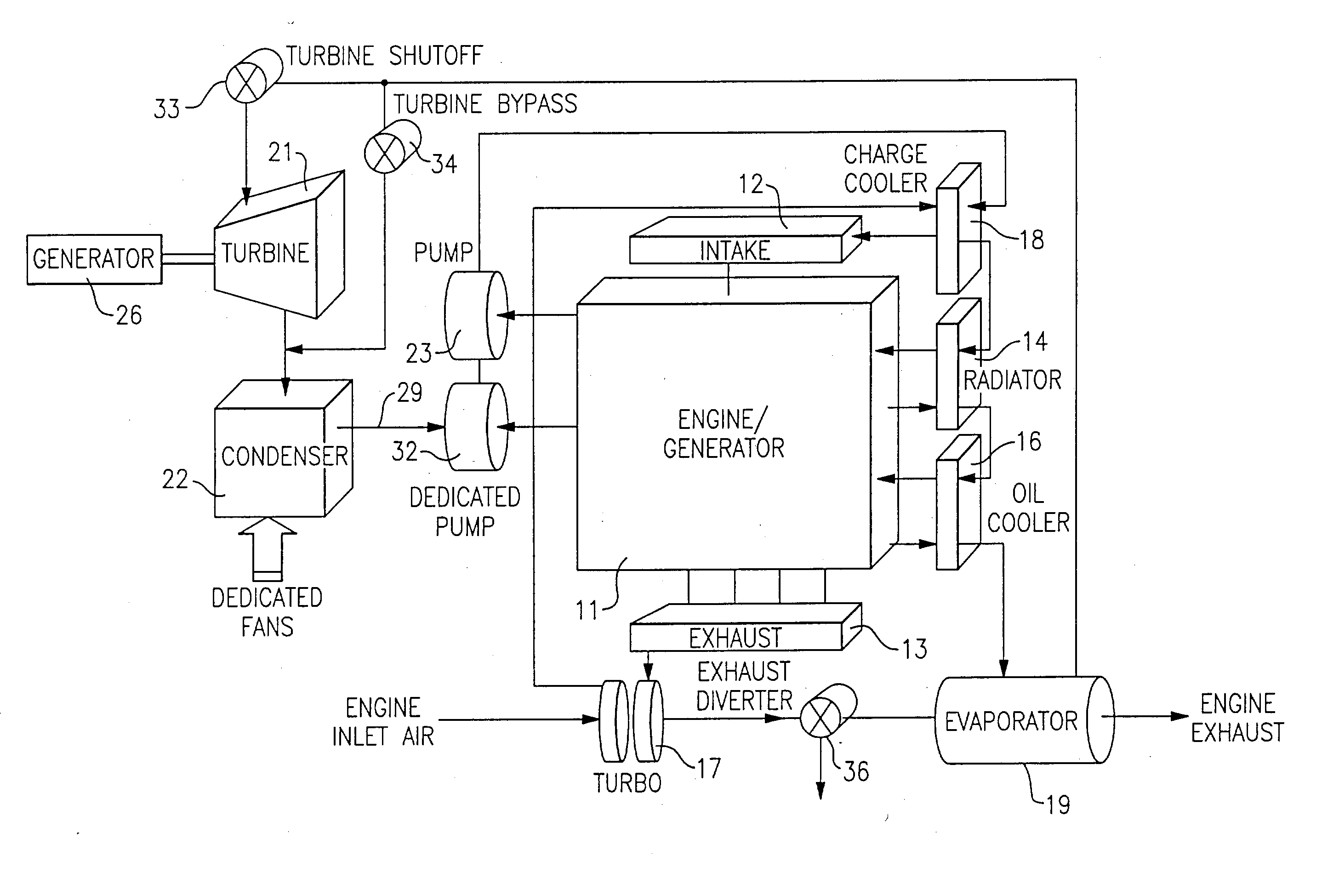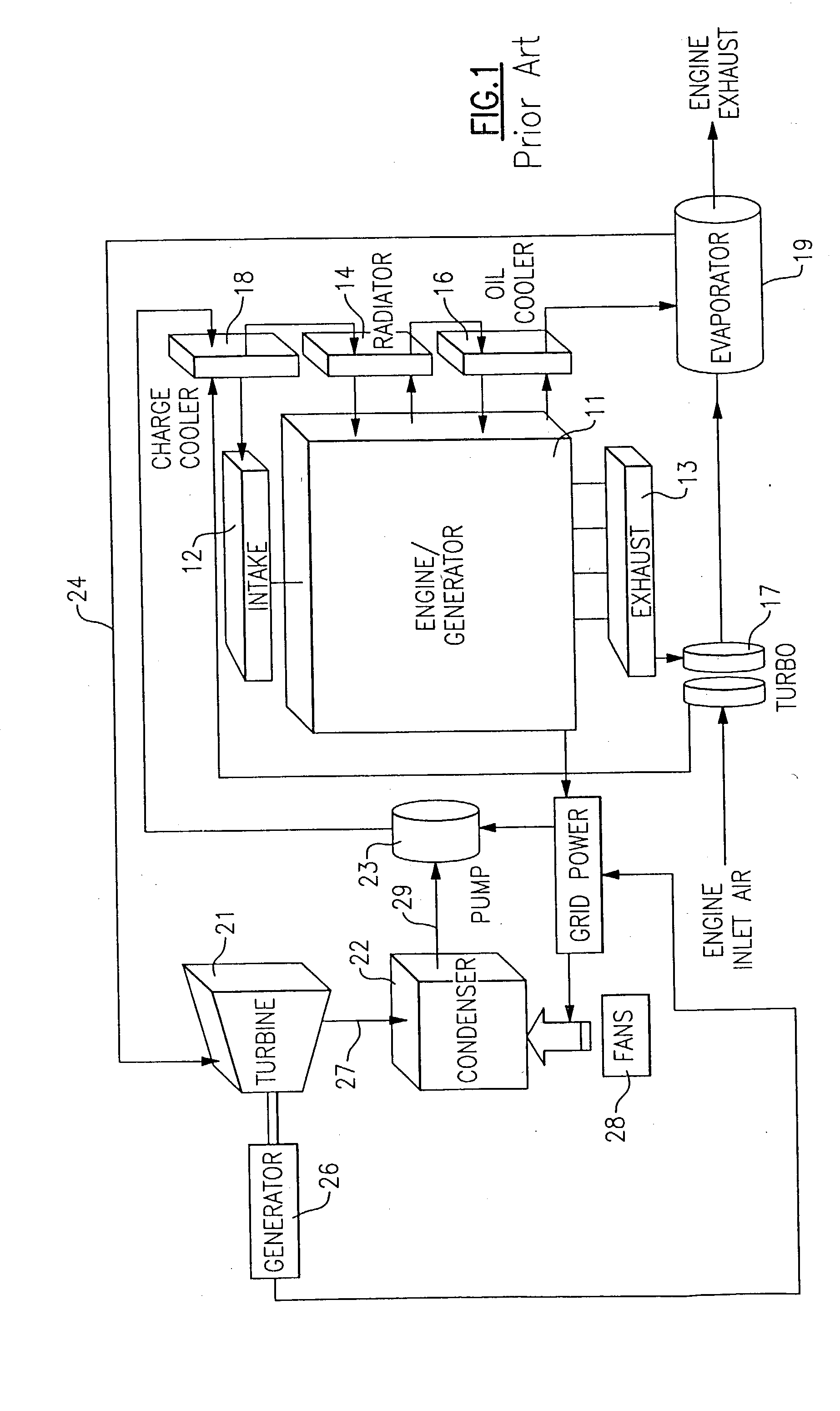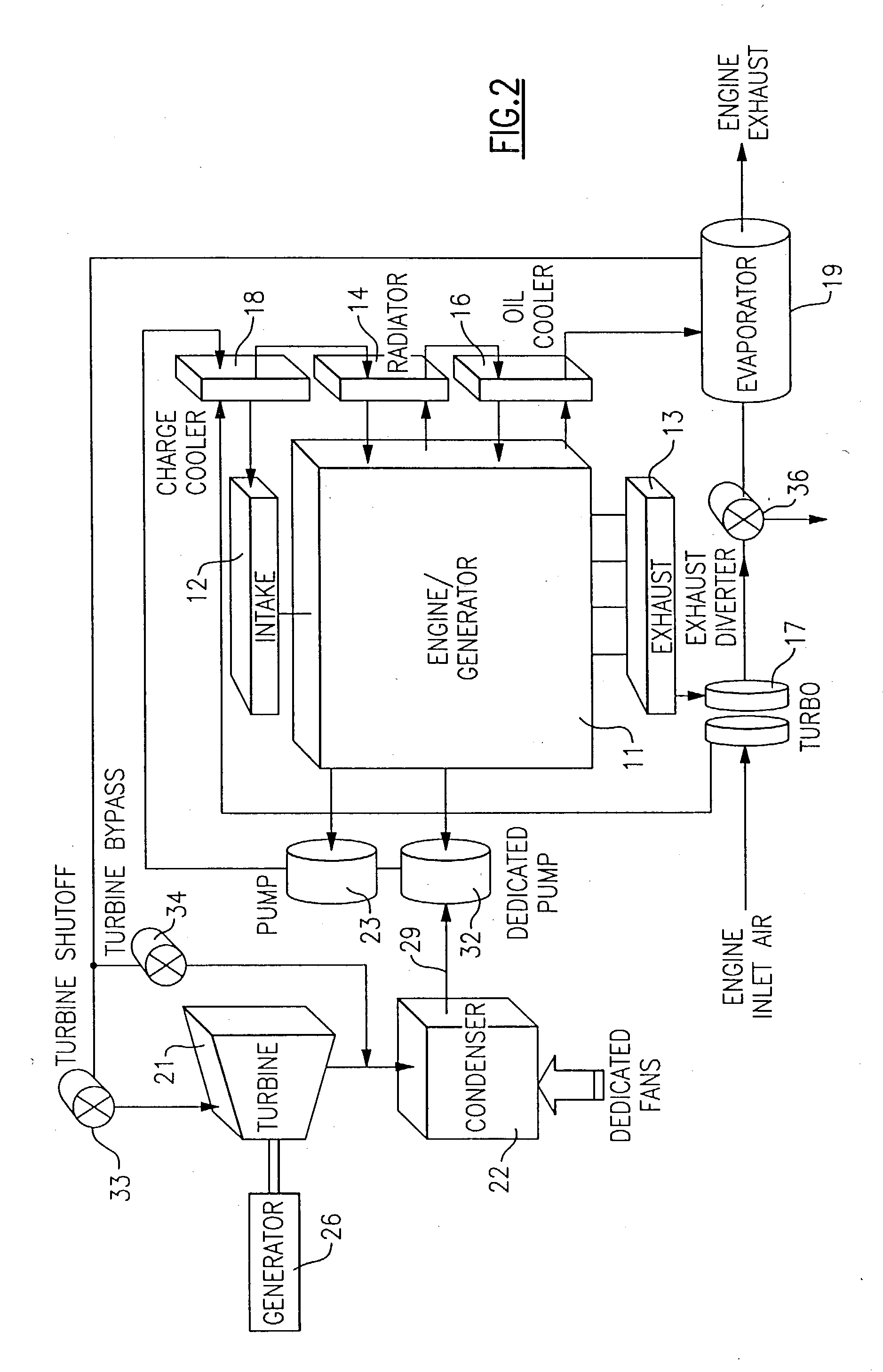Organic rankine cycle system for use with a reciprocating engine
a technology of organic rankine and reciprocating engine, which is applied in the direction of steam engine plants, machines/engines, mechanical equipment, etc., can solve the problems of large percentage of commercial engines rejecting waste heat, orc working fluid no longer being circulated through the reciprocating engine, and nitrous oxides (nox) and particulates can be an issue, so as to reduce the amount of heat that is transferred and reduce the risk of cavitation
- Summary
- Abstract
- Description
- Claims
- Application Information
AI Technical Summary
Benefits of technology
Problems solved by technology
Method used
Image
Examples
Embodiment Construction
[0018] Referring now to FIG. 1, there is shown a reciprocating engine 11 of the type which is typically used to drive a generator (not shown) for purposes of providing electrical power for consumer use. The engine 11 has an air intake section 12 for taking in air for combustion purposes and an exhaust 13 which may be discharged to the environment, but is preferably applied to convert a portion of the energy therein to useful purposes.
[0019] The engine 11 also has a plurality of heat exchangers with appropriate fluid for maintaining the engine 11 at acceptable operating temperatures. A radiator 14 is provided to take heat away from a liquid coolant that is circulated in heat exchange relationship with the portion of the engine where combustion occurs, while an oil cooler 16 is provided to remove heat from a lubricant that is circulated within the moving parts of the engine 11.
[0020] The engine 11 may be provided with a turbo charger 17 which receives high temperature, high pressure e...
PUM
 Login to View More
Login to View More Abstract
Description
Claims
Application Information
 Login to View More
Login to View More - R&D
- Intellectual Property
- Life Sciences
- Materials
- Tech Scout
- Unparalleled Data Quality
- Higher Quality Content
- 60% Fewer Hallucinations
Browse by: Latest US Patents, China's latest patents, Technical Efficacy Thesaurus, Application Domain, Technology Topic, Popular Technical Reports.
© 2025 PatSnap. All rights reserved.Legal|Privacy policy|Modern Slavery Act Transparency Statement|Sitemap|About US| Contact US: help@patsnap.com



